The closure of the 784MW plant in 2016 signalled an important transition for South Australia, allowing the state to focus on renewables and become a global leader in wind and solar generation.
This has included the commissioning of several major wind farms, the nearby Bungala Solar Power Project and the installation of Tesla’s ‘world’s biggest battery’ at Neoen’s Hornsdale wind farm in the state’s Mid North.
Flinders Power has been managing the rehabilitation of the Port Augusta site since its closure and reached an agreement in February to sell the coastal land to CU-River Mining.
The South Australian iron ore magnetite producer plans to develop a $250 million port facility on the huge 1068ha site.
CU-River Mining is also looking into the feasibility of building a large-scale solar farm on the site.
Flinders Power contracted McMahon Services Australia to carry out the decommissioning and demolition work with ‘practical completion’ being achieved last week.
Site contamination work to remediate soil and groundwater has also been recently completed.
This has coincided with welcome rains in the past 10 days that are expected to spark further growth of a 320ha native revegetation project on top of the site’s ash dam, which has suffered through a long drought with the rest of South Australia.
“It’s a significant milestone for us – we’ve been working on the project for four years so it’s great to have completed the work,” Flinders Power program director Brad Williams said.
The 90MW Playford A power station was commissioned by the Electricity Trust of South Australia in 1954 and the adjacent 240MW Playford B plant was constructed in 1963. The 520MW Northern power station was established alongside Playford B in 1985 and later expanded to a capacity of 544MW.
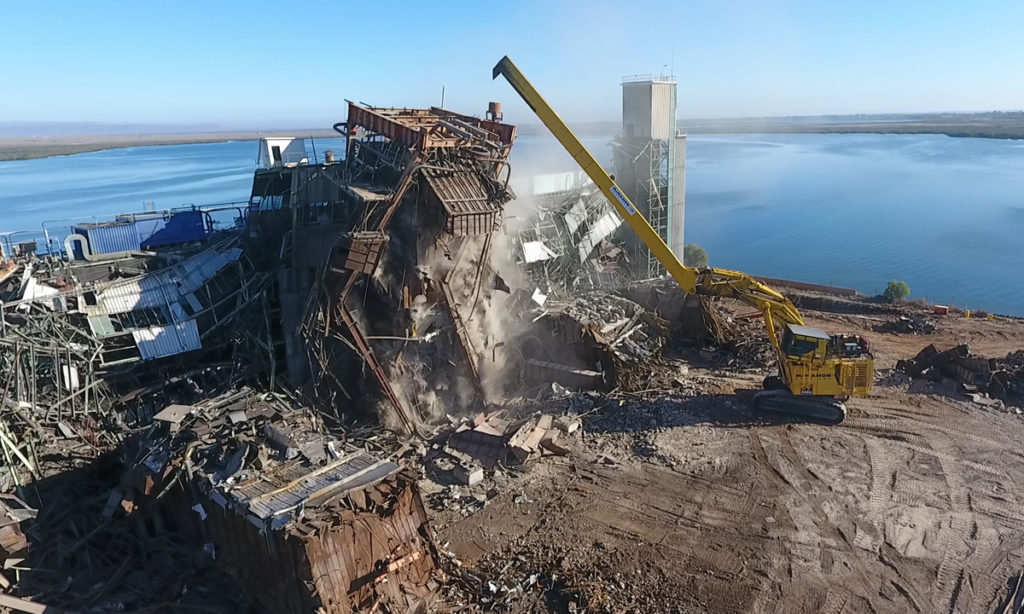
Picture courtesy of Flinders Power.
All three were fuelled by coal mined at Leigh Creek in Outback South Australia and transported 260km along a dedicated rail line south to Port Augusta.
Alinta Energy mothballed Playford B in 2012 and the last electricity was produced at the Northern Power Station in May 2016.
The power stations’ ash dam had reached 273 ha and a depth of 5-8m by the time the plants closed in 2016. Hail and strong winds ripped the suppressant coating off the dried-out ash pile in January 2017, resulting in a dust cloud that impacted parts of the nearby town.
Williams said apart from the ash dust issue in early 2017 brought about by the severe storm event, the whole process had gone “exceptionally well”.
“Demolishing three coal-fired power stations of this scale, rehabilitating the site and particularly the scale of the ash storage area is really unprecedented,” he said.
“You learn as you go and I think the whole project has been exceptionally delivered by the whole team.
“It’s all on time, on budget and delivered safely. We had eight big charge felling events where the boilers and three stacks were felled and there were no concerns there.”
The town of Port Augusta has a population of 6500 and is located about 300km north of Adelaide, the South Australian capital. It is also home to Sundrop Farms’ solar thermal powered mega greenhouse and was set to house the 150MW Aurora solar thermal plant until the project was abandoned last month because of financing issues with its proponent SolarReserve.
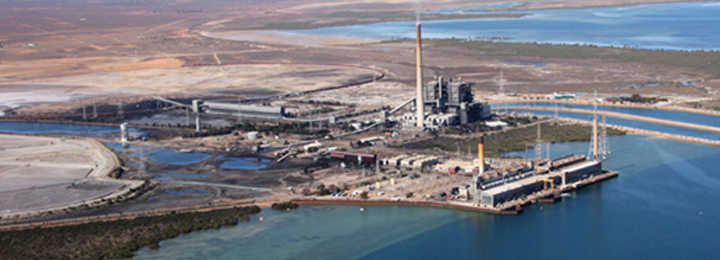
The fully operational plant in 2008. Picture courtesy of Flinders Power.
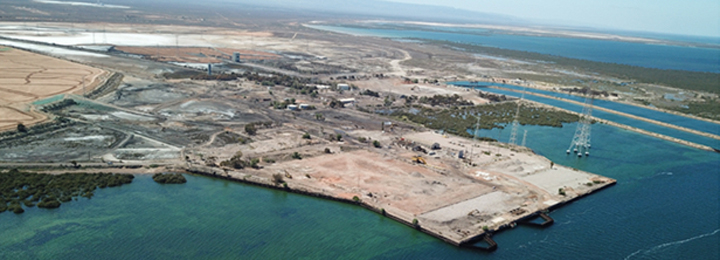
The rehabilitated site in 2019. Picture courtesy of Flinders Power.
Williams said Flinders Power was working through settlement with CU-River, which included satisfying the State Government it had fulfilled its remediation obligations.
“We’re working towards a late May settlement,” he said.
“The EPA licence will be transferred after settlement and then CU-River will oversee the ongoing management obligations for the site.”
As part of the closure process, South Australia’s Environment Protection Authority required Flinders Power to develop and implement a closure and post-closure plan, a dust management plan, a rehabilitation plan for the ash dam and put in place additional dust control measures when needed.
These extra measures were implemented during the particularly dry spring of 2018 and included the use of dust suppressants and soil ‘roughing’ to stop dust being raised.
In an emailed statement, the EPA said Flinders Power had complied with its licence conditions, including ensuring sufficient dust management controls were in place.
The statement said air-quality monitoring had shown Port Augusta had not exceeded the national standards for the finest particles air-quality monitoring since the area was covered with topsoil in 2017.
“There have also been no community dust complaints attributed to the site since extra measures were put in place to suppress dust in October 2018.”
Part of the ongoing management that will become CU-River Mining’s responsibility after settlement is the 320ha revegetation project on the former ash dam.
The area is made up of the 20ha former coal stockpile area, the 30ha borrow pit where 700,000 cubic metres of dirt was taken for the project and the 270ha ash pit, which had been kept wet with sea water through more than 60 years of power station operation.
Flinders Power contracted South Australian-based Succession Ecology to drive the massive revegetation effort in collaboration with McMahon Services.
The dirt from the borrow pit was spread over the area in early 2017 before six tonnes of native seeds – 4.5 tonnes of saltbush seeds and 1.5 tonnes of native grasses – were sown in two plantings from June to August 2017 and May to October 2018.
Only about half of Port Augusta’s long-term average rainfall has fallen in the past 24 months. The situation was exacerbated by a scorching recent summer where daytime temperatures approached 50C.
But 38mm of rain in the past 10 has buoyed hopes that more plants will germinate in the coming weeks and become established, particularly if moderate follow up rains are received.
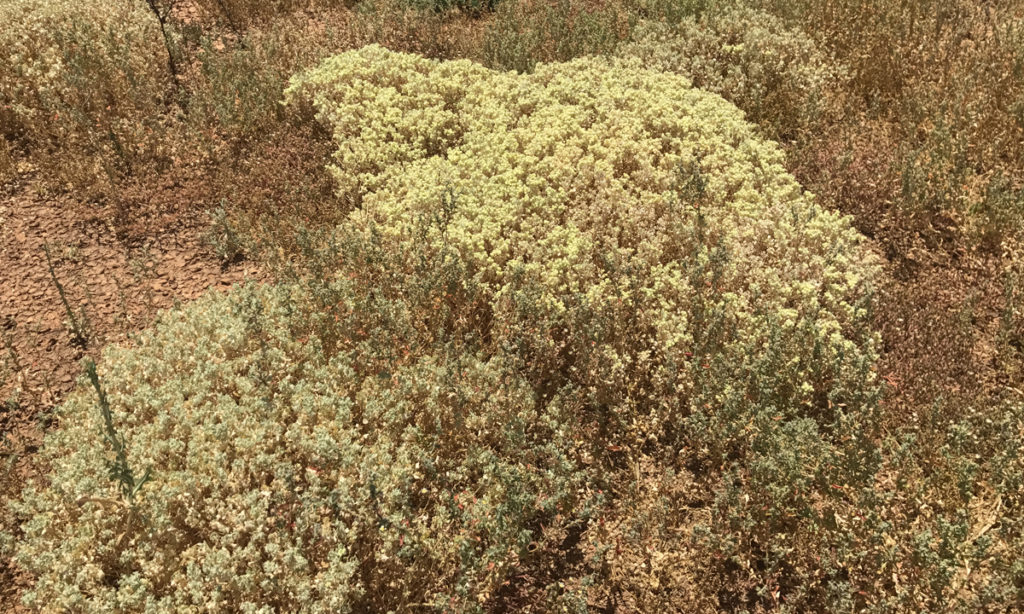
Flat top saltbush is among the species planted on the ash dam site. Picture courtesy Succession Ecology.
Succession Ecology director Glenn Christie said the saltbush had outperformed the native grasses with some shrubs almost a metre wide.
He said this month’s rains were the most significant since 25mm last June and would likely spark and explosion of germination and growth.
“Because this rain event has happened about six weeks earlier than last year, the soil is warmer and they are the kind of conditions you want,” Christie said.
“But it’s all going to depend on follow up rain – if we even get a moderate winter we’ll be away.
“Last year we got a good start but then we got a very cold and dry winter and then the same thing happened again in the spring and summer.
“What we’ve got is little oases all over the place. We can see the potential but it is the rain gods that will make this happen.
Christie said a revegetation project of this size in an arid zone was a massive challenge and possibly the first of its kind anywhere in the world.
“A lot of people think of plantings they think of trees and shrubs but that part of Port Augusta was never trees or shrubs,” he said.
“That whole power station was built on salt marsh and that’s what we are trying to re-establish.
“Think of bonsai forest where you have your ground covers, shrubs and trees and nothing is taller than a metre and a half.”
This content is protected by copyright and may not be reused. If you want to cooperate with us and would like to reuse some of our content, please contact: editors@pv-magazine.com.
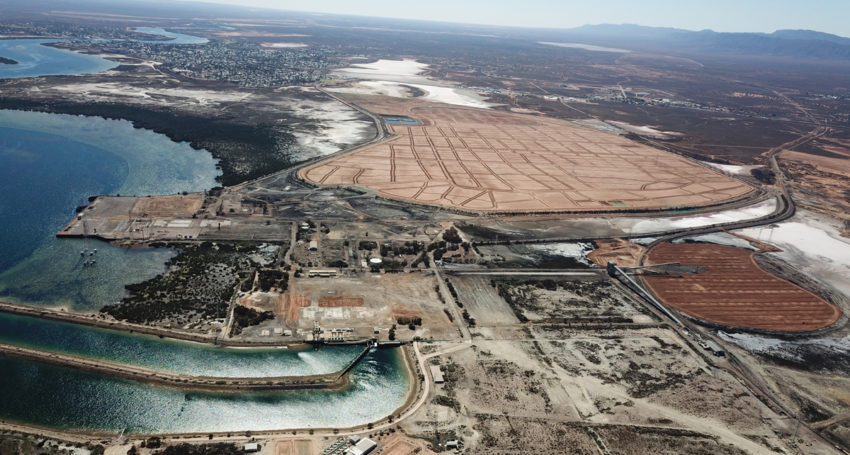







By submitting this form you agree to pv magazine using your data for the purposes of publishing your comment.
Your personal data will only be disclosed or otherwise transmitted to third parties for the purposes of spam filtering or if this is necessary for technical maintenance of the website. Any other transfer to third parties will not take place unless this is justified on the basis of applicable data protection regulations or if pv magazine is legally obliged to do so.
You may revoke this consent at any time with effect for the future, in which case your personal data will be deleted immediately. Otherwise, your data will be deleted if pv magazine has processed your request or the purpose of data storage is fulfilled.
Further information on data privacy can be found in our Data Protection Policy.